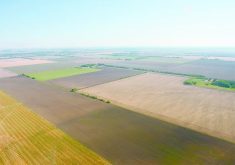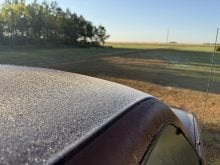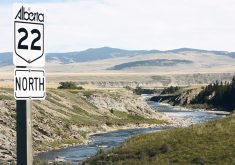Manitoba farmers should prepare for a flood of dangerous weeds this spring, says Manitoba Agriculture weed specialist Tammy Jones.
Flood waters are likely to bring waterhemp and other herbicide-resistant weeds north along the Red River this spring, continuing a pattern seen in the United States as multiple herbicide-resistant weeds wreak havoc on U.S. farmers’ fields.
“Is it going to flood this spring? How much is it going to flood this spring?” asked Jones during a session at St. Jean Farm Days.
“Surveillance is your No. 1 tool.”
Read Also

Plant-based ‘meat’ faces turning point
The U.S. firm that owns the Yves brand told CBC News that the “meat free” category has been in decline for several years, so the company made the difficult choice to pull Yves Veggie Cuisine products.
Herbicide resistant weeds are nothing new to Manitoba, with resistant wild oats appearing more than two decades ago.
But not only have other herbicide resistant weeds become common, a number have developed resistance to multiple chemicals, making them hard to eliminate once established.
The widespread discovery of herbicide resistant kochia in recent years has been a troubling development, dashing hopes that it might not become a common pest on the eastern Prairies.
But the northward movement of herbicide resistant weeds like waterhemp and Palmer amaranth scares weed-savvy farmers and weed specialists. Not only do these weeds often grow to giant proportions and outcompete smaller northern prairie crops, but they also produce massive numbers of seeds. Once they’re established they can become impossible to eliminate.
The special worry for this spring is because of the saturation of soils along the Red River’s watershed and the large amount of snow cloaking North Dakota and Minnesota fields. If that melts quickly or there is much spring precipitation, the Red River Valley could flood, and those floods can stretch kilometres beyond the river on the valley’s flat bottom.
Weed seeds could be carried wide and establish well away from the river banks, where many farmers now look for invaders.
Jones said farmers should pull and destroy any patches they find.
“Eradication is the ultimate tool,” she said.
Some farmers today are being diligent pulling patches they find. That should help them keep ahead of the problem.
Some U.S. farmers have had to abandon fields or portions of fields once weeds like Palmer amaranth have become established.
It’s not just flowing water that could bring in herbicide resistant weed seeds from the U.S. Duck poop has also been proven to transport seeds and leave them viable hundreds of kilometres from where they were pecked.
“Gizzards aren’t going to prevent it,” said Jones.
Herbicide resistant kochia has also been rolling toward Manitoba from badly beset areas of Alberta, but much of the evolution of glyphosate-resistant kochia in Manitoba is probably homegrown.
“We grow our own problems for the most part,” she said, noting that Manitoba now has a higher incidence of glyphosate-resistant kochia than Alberta.
“We’re doing it faster than Alberta.”
The soaring rates of multiple resistant weeds means farmers are going to have to find ways to control flushes other than traditional chemicals.
Better rotations, narrower rows, in-row cultivation and other agronomic methods can help mitigate the problems and lower the risk of herbicide resistant weeds becoming established.
But the best defence for farmers is to be vigilant and watch for problems, Jones said.
The problem is coming and it’s easier to deal with when it first occurs than after it has taken over a field.


















